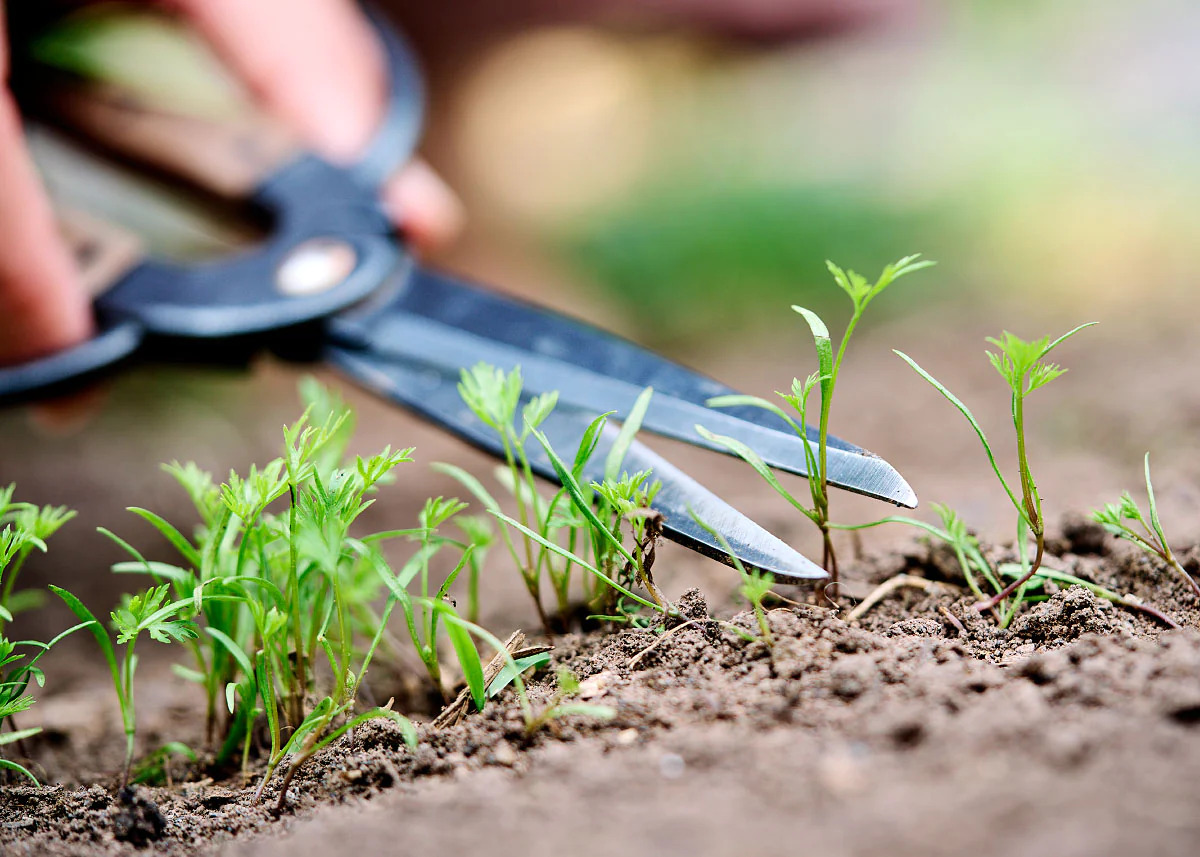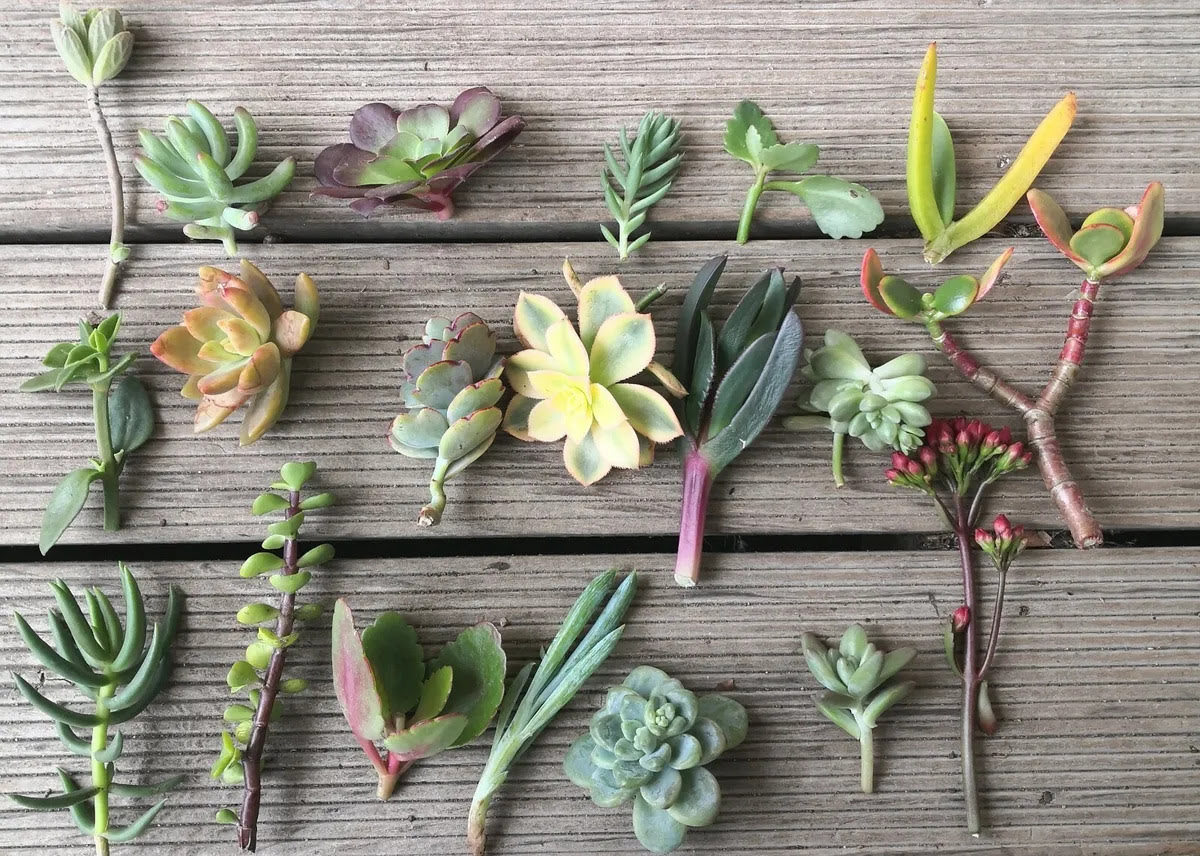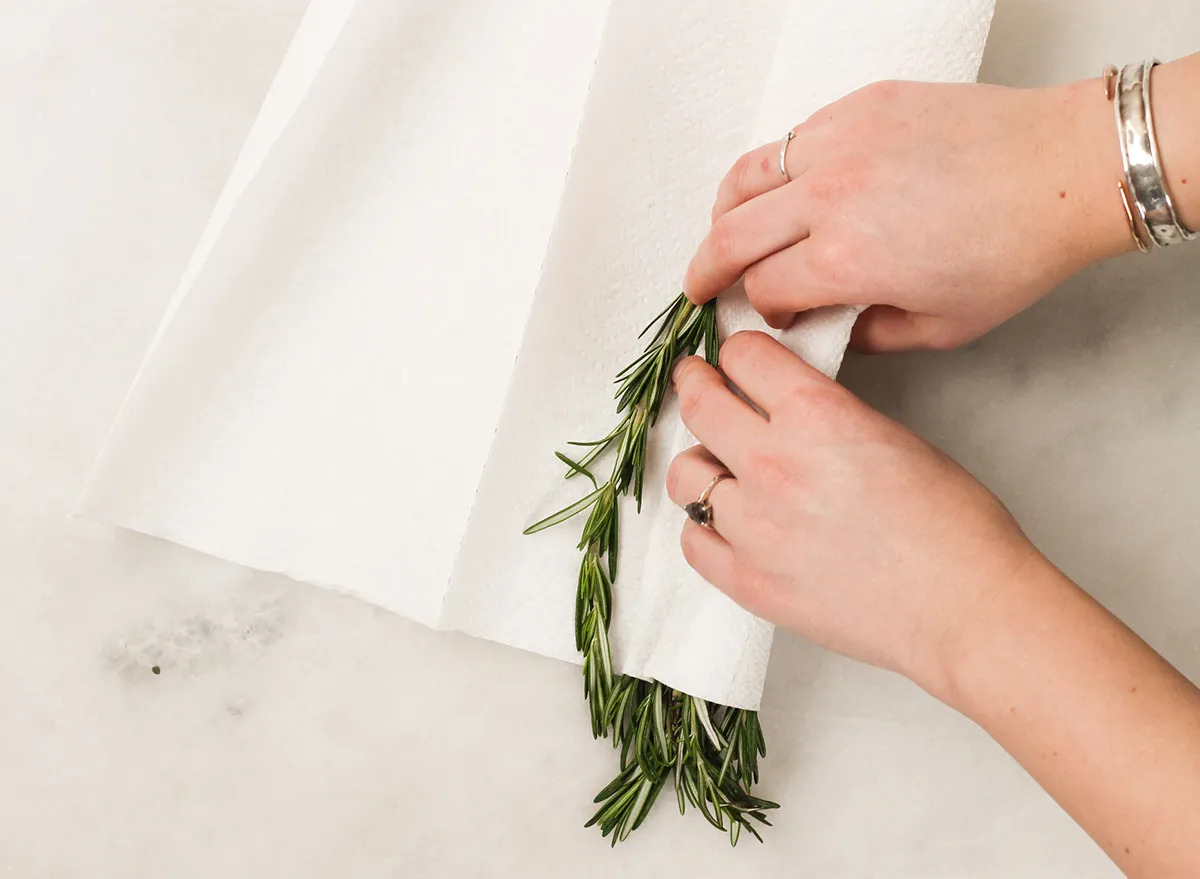Home>Gardening Tips and Tricks>Problem Solving>How To Keep Rodents Out Of Compost


Problem Solving
How To Keep Rodents Out Of Compost
Modified: January 22, 2024
Learn effective problem-solving strategies to keep rodents out of your compost. Discover tips and techniques to prevent rodent infestations and maintain a successful composting system.
(Many of the links in this article redirect to a specific reviewed product. Your purchase of these products through affiliate links helps to generate commission for Chicagolandgardening.com, at no extra cost. Learn more)
Table of Contents
Introduction
Welcome to our guide on how to keep rodents out of your compost. For any avid gardener or eco-conscious individual, composting is an essential practice. It allows us to reduce waste, improve soil health, and cultivate nutrient-rich organic matter. However, one thing that can quickly turn this eco-friendly endeavor into a nightmare is having rodents invade your compost pile.
Rodents such as rats and mice are naturally drawn to compost heaps due to the abundance of food and shelter. They not only create a mess but also pose a health risk and can damage your composting system. Therefore, it’s crucial to take preventive measures to keep these pesky critters at bay.
In this article, we will explore various strategies to create a rodent-proof composting environment. From choosing the right compost bin to implementing proper waste management techniques, we will cover everything you need to know to protect your compost from rodent infestations. Let’s dive in!
Understanding the Attraction
Before we delve into the methods of keeping rodents out of your compost, it’s essential to understand why they are so attracted to it in the first place. Compost piles provide a perfect environment for rodents to thrive due to the abundance of food, moisture, and warmth.
Firstly, rodents are attracted to the food sources found in compost piles. The organic materials, such as kitchen scraps and yard waste, serve as a smorgasbord for these pests. From fruit and vegetable peels to leftover grains, there’s plenty for them to feast on. Additionally, the decomposition process in the compost generates heat, creating a warm and cozy spot that rodents find appealing for nesting.
Furthermore, compost piles retain moisture, which attracts rodents as they rely on water to survive. The damp environment, combined with the food sources, becomes an inviting habitat for them.
Rodents are also skilled diggers and can easily burrow into the compost pile, seeking shelter and protection from predators. They can quickly move through loose materials and make themselves at home within the compost heap.
It’s crucial to understand these attractions to effectively combat rodent infestation in your composting system. By addressing the factors that entice rodents, we can implement the appropriate measures to deter them from invading our compost piles.
Essential Components of a Rodent-Proof Compost
Creating a rodent-proof compost requires incorporating specific components that will make your compost pile unappealing to rodents. By focusing on these essential elements, you can significantly reduce the risk of rodent infestation. Let’s take a closer look:
- Proper layering: Start your compost pile with a layer of coarse materials like twigs or small branches. This creates airflow and discourages rodents from burrowing. Alternate between layers of brown materials (e.g., dry leaves, shredded paper) and green materials (e.g., kitchen scraps, grass clippings) to maintain a balanced compost pile and minimize odors that may attract rodents.
- Avoid meat and dairy products: Rodents are particularly attracted to meat and dairy products. Avoid adding these items to your compost as they can increase the likelihood of attracting unwanted pests. Stick to vegetable-based food scraps, coffee grounds, and eggshells instead.
- Add natural deterrents: Incorporating natural deterrents can help repel rodents from your compost pile. Consider adding items such as cayenne pepper, mint leaves, or garlic cloves throughout the compost. The strong smells can discourage rodents from approaching.
- Turn the compost regularly: Regularly turning the compost pile will not only help with the decomposition process but also disrupt any potential rodent nesting sites. Rodents prefer undisturbed areas, so turning the compost will make it less appealing for them.
- Use a compost bin: Consider using a rodent-resistant compost bin to further prevent access to your compost pile. Opt for a bin made of sturdy materials like metal or hard plastic that rodents cannot chew through. Ensure the bin has a tight-fitting lid and bottom to prevent the entry of rodents from any angle.
By implementing these essential components in your composting practices, you’ll create an environment that is less attractive to rodents. This will help maintain the integrity of your compost pile and preserve its benefits for your garden or plants.
Choosing the Right Compost Bin
When it comes to keeping rodents out of your compost, selecting the right compost bin is crucial. The right bin can serve as a physical barrier to prevent rodents from accessing your compost pile. Here are some factors to consider when choosing a compost bin:
- Material: Opt for a compost bin that is made of sturdy and durable materials such as metal or hard plastic. These materials are more resilient and less likely to be penetrated or chewed through by rodents.
- Design: Look for a bin with a tight-fitting lid. This will help secure your compost and prevent rodents from gaining easy access. A lid that locks or latches is even better, as it provides an added layer of protection.
- Size: Consider the size of the bin based on your composting needs. If you generate a significant amount of compostable material, a larger bin may be necessary. However, keep in mind that a smaller bin may be easier to manage and maintain.
- Ventilation: Ensure that the compost bin has sufficient ventilation to allow for proper airflow. Good airflow helps with the decomposition process and reduces the risk of attracting rodents. Look for compost bins with ventilation holes or slots that are small enough to prevent rodents from entering.
- Bottom structure: Check if the compost bin has a solid bottom or an open-bottom design. An open-bottom bin allows for better drainage and enables the compost to come into contact with the soil, which can deter rodents. However, if your composting area is prone to rodent burrowing, a solid bottom may be preferable.
- Ease of use: Consider the ease of adding and removing compost materials from the bin. Look for features such as removable panels or doors that allow for easy access while still maintaining the integrity of the bin’s structure.
By taking these factors into account, you can choose a compost bin that is specifically designed to deter rodents. Remember that no bin is entirely rodent-proof, but selecting the most suitable one can significantly reduce the risk of unwanted guests in your composting system.
Proper Waste Management Techniques
Implementing proper waste management techniques is essential to minimize the attraction of rodents to your compost pile. By following these guidelines, you can create a composting system that is less appealing to these unwanted visitors:
- Balance the carbon-nitrogen ratio: Maintaining the right balance between carbon-rich and nitrogen-rich materials is crucial. Aim for a ratio of roughly 30 parts carbon (e.g., dry leaves, shredded paper) to 1 part nitrogen (e.g., kitchen scraps, grass clippings). An imbalanced ratio can lead to slow decomposition and create odors that attract rodents.
- Chop or shred large materials: To deter rodents, break down larger compost items into smaller pieces. This reduces potential nesting spaces and makes it harder for rodents to access food sources. Chop or shred items such as large branches or fruit peels before adding them to the compost pile.
- Avoid oily or greasy materials: Grease and oil can attract rodents due to their strong scent. Avoid adding oily or greasy items such as cooking oil, fatty meat scraps, or heavily sauced food waste to your compost pile. Instead, opt for vegetable-based food waste.
- Avoid overwatering: Excess moisture can make your compost pile a breeding ground for rodents. While compost piles need some moisture, avoid overwatering. Maintain a moist but not soggy environment to discourage rodents from nesting or seeking water sources in your compost.
- Cover fresh kitchen waste: When adding fresh kitchen waste to your compost pile, cover it with a layer of dry carbon-rich materials. This helps to reduce odors and makes it less enticing for rodents. It also helps maintain the carbon-nitrogen ratio in your compost.
- Keep a separate compost bucket: To prevent attracting pests into your home, use a separate compost bucket in the kitchen. This container should have a tight-fitting lid to seal in odors and prevent rodents from detecting the food waste. Empty the kitchen compost regularly into your outdoor compost system.
By following these waste management techniques, you can create a well-maintained compost pile that is less attractive to rodents. Consistently managing the materials you add to your compost will go a long way in deterring unwanted visitors and ensuring a healthy composting process.
Securing the Compost Area
Securing the compost area is an important step in preventing rodents from accessing your compost pile. By implementing proper measures, you can create a physical barrier that deters these pests from infiltrating your composting system. Here are some ways to secure the compost area:
- Choose the right location: Select a well-lit and open area for your compost pile. Avoid placing it too close to walls, fences, or overhanging branches that could serve as avenues for rodents to access the compost. A clear and visible location makes it more difficult for rodents to approach unnoticed.
- Use a solid base: If your composting area is prone to rodent burrowing, consider using a solid base for your compost pile. A layer of wire mesh or hardware cloth placed on the ground before starting your compost can help prevent rodents from digging their way in from below.
- Install fencing: Erecting a fence around the compost area can provide an additional layer of protection. Use sturdy wire or mesh fencing with small openings to prevent rodents from squeezing through. Make sure the fence extends below ground level to deter burrowing.
- Secure the lid: If you’re using a compost bin with a lid, ensure that it fits tightly and securely. Rodents are excellent climbers and can easily access a loose or ill-fitting lid. Consider adding a weight or latch to keep the lid in place and prevent easy entry.
- Use wire mesh: In addition to securing the lid, you can further reinforce the compost bin by attaching wire mesh panels around the sides. This prevents rodents from gnawing through the bin walls and gaining access to the contents.
- Remove nearby attractants: Keep the area surrounding the compost pile clear of any potential attractants for rodents. Remove fallen fruits, pet food bowls, and bird feeders that can lure rodents towards the area. By eliminating these additional food sources, you reduce the chance of rodents becoming interested in your compost.
By securing the compost area properly, you create a deterrent for rodents, making it challenging for them to enter and access the compost pile. These measures, when combined with other preventive practices, significantly reduce the risk of rodent infestation and help maintain a healthy composting environment.
Natural Deterrents for Rodents
When it comes to keeping rodents out of your compost, natural deterrents can play a significant role in repelling these pests. By harnessing the power of certain scents and plants, you can create an environment that is less appealing to rodents. Here are some natural deterrents to consider:
- Cayenne pepper: Sprinkling cayenne pepper around the perimeter of your compost area can act as a powerful deterrent. The strong scent and spicy properties of cayenne pepper are highly unpleasant to rodents. Reapply the pepper regularly, especially after rain, to maintain its potency.
- Mint leaves: The strong aroma of mint leaves is known to repel rodents. Plants like peppermint or spearmint can serve as a natural deterrent when grown near your compost pile. Alternatively, you can crush fresh mint leaves and scatter them around the compost area.
- Garlic cloves: Like mint, garlic emits a pungent odor that rodents find repulsive. Place garlic cloves or garlic-infused oil near your compost pile to keep rodents at bay.
- Lavender: Lavender is not only pleasing to humans but also acts as a natural rodent repellent. Planting lavender near your compost area can help deter rodents. Additionally, dried lavender sachets or lavender essential oil can be strategically placed around the compost to enhance its effectiveness.
- Thorny plants: To create a physical barrier that deters rodents, consider planting thorny shrubs or plants around the perimeter of your compost area. Examples include rose bushes, blackberry bushes, or holly plants. The thorns act as a natural barrier that rodents are less likely to navigate.
- Predator urine: Rodents are instinctively wary of predators. Using commercially available predator urine, such as that of a fox or coyote, can create the illusion of danger and limit rodent activity around your compost. Reapply the urine periodically to maintain its effectiveness.
It’s important to note that natural deterrents may not provide 100% protection against rodents, as persistence and adaptability are traits of these pests. However, incorporating these natural deterrents alongside other preventive measures can significantly reduce the likelihood of rodent infestations in your composting system.
Monitoring and Maintenance Tips
To ensure the effectiveness of your rodent-proof measures and maintain a healthy composting environment, regular monitoring and maintenance are essential. Here are some tips to help you stay vigilant and keep rodents out of your compost:
- Regular visual inspections: Take the time to visually inspect your compost pile regularly. Look for any signs of rodent activity, such as burrows, droppings, or chewed materials. Early detection can prevent a minor issue from escalating into a full-blown infestation.
- Address any issues promptly: If you notice signs of rodents or other pests, take immediate action to address the problem. Remove any nesting materials, repair or reinforce damaged barriers, and consider reapplying deterrents. This proactive approach can prevent further attraction and intrusion by rodents.
- Compost turning: Regularly turn your compost pile to promote decomposition and discourage rodents from nesting. Turning the compost disrupts their potential nesting sites and creates a less favorable environment for them. Aim to turn the compost every few weeks or as needed.
- Maintain a healthy compost: Pay attention to the moisture content and balance of materials in your compost. Avoid overwatering, as excess moisture can attract rodents. Ensure a well-balanced ratio of carbon-rich and nitrogen-rich materials to prevent odors that may entice rodents.
- Proper waste layering: Layer your compost materials properly, alternating between brown and green materials. This layering technique helps maintain airflow and minimizes odors. Rodents are less likely to be attracted to a well-maintained compost pile.
- Regular cleaning: Clean the area around your compost pile to eliminate any spilled materials or debris that may attract rodents. Proper sanitation helps reduce the overall appeal of your composting area and reduces the likelihood of rodent activity.
- Adjust deterrents as needed: Natural deterrents may lose their effectiveness over time. Monitor the potency of the deterrents you use and be prepared to adjust or replenish them as necessary. This ensures that the scent deterrents continue to repel rodents effectively.
By implementing these monitoring and maintenance tips, you can actively manage your composting system and proactively deter rodents. Regular inspections and diligent upkeep will help maintain a healthy compost pile while minimizing the risk of rodent infestation.
Conclusion
Creating a rodent-proof compost system requires a combination of preventive measures, proper waste management, and regular maintenance. By understanding the attractions that draw rodents to compost piles and implementing the necessary strategies, you can keep these unwanted visitors at bay.
Start by incorporating essential components such as proper layering, avoiding meat and dairy, adding natural deterrents, and turning the compost regularly. These steps create an environment that is less enticing for rodents. Choosing the right compost bin and securing the compost area with fencing and a secure lid further strengthen your defense against rodent intrusion.
Proper waste management techniques, such as balancing the carbon-nitrogen ratio and avoiding greasy materials, help minimize odors and reduce the risk of attracting rodents. Natural deterrents like cayenne pepper, mint leaves, and garlic can be strategically used to repel rodents from your compost area.
To ensure ongoing success, monitor your compost pile regularly for signs of rodents and address any issues promptly. Regularly turn the compost, maintain a balanced moisture level, and keep the area clean to discourage rodent activity. Adjust and replenish natural deterrents as needed to maintain their effectiveness.
By following these guidelines and staying proactive in managing your composting system, you can create a healthy and rodent-free environment for your compost. Enjoy the benefits of nutrient-rich organic matter while keeping those pesky rodents out of your compost pile.




